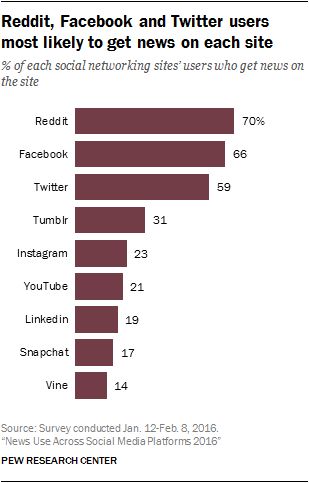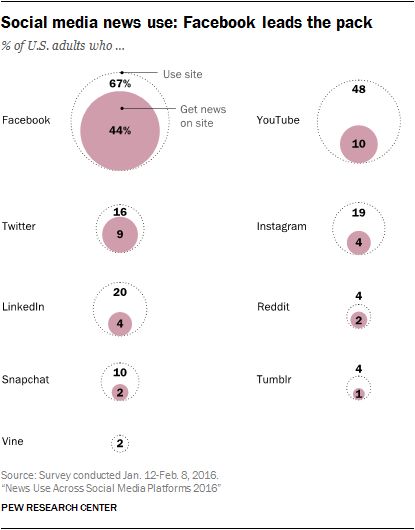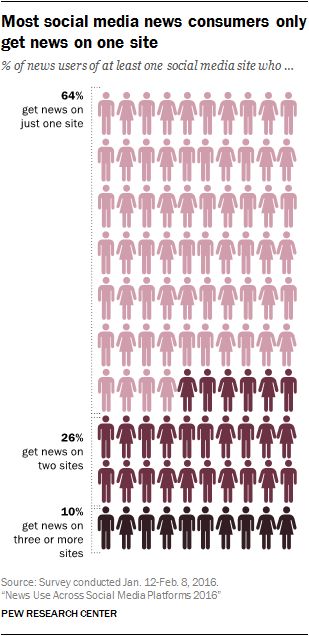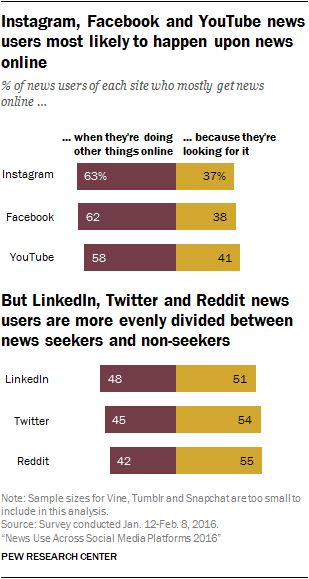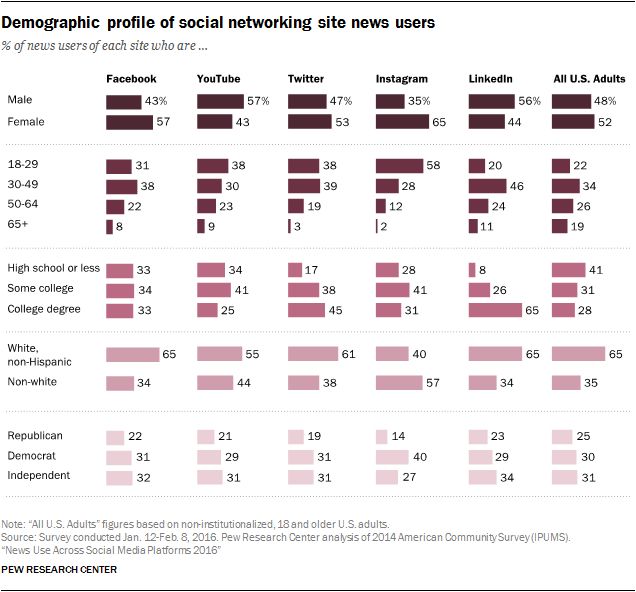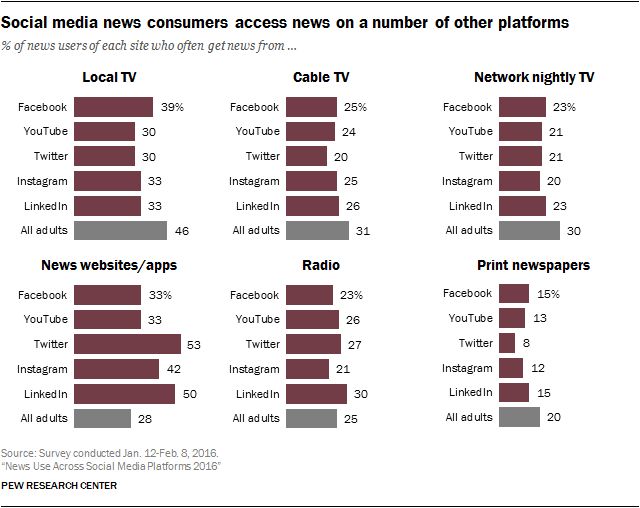How people are using News Articles on Social Media Platforms
- An ongoing study by Pew Research Center from 2013 to 2016
- A majority of adults (62%) get news on social media, and 18% do so often
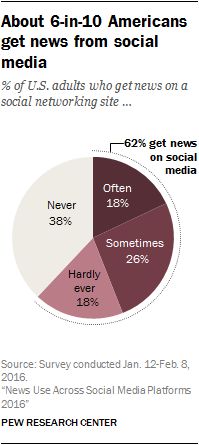
A majority of U.S. adults – 62% – get news on social media, and 18% do so often, according to a new survey by Pew Research Center, But which social media sites have the largest portion of users getting news there? How many get news on multiple social media sites? And to what degree are these news consumers seeking online news out versus happening upon it while doing other things?
News plays a varying role across the social networking sites studied.2 Two-thirds of Facebook users (66%) get news on the site, nearly six-in-ten Twitter users (59%) get news on Twitter, and seven-in-ten Reddit users get news on that platform. On Tumblr, the figure sits at 31%, while for the other five social networking sites it is true of only about one-fifth or less of their user bases.
- Facebook is by far the largest social networking site, reaching 67% of U.S. adults. The two-thirds of Facebook users who get news there, then, amount to 44% of the general population.
- YouTube has the next greatest reach in terms of general usage, at 48% of U.S. adults. But only about a fifth of its users get news there, which amounts to 10% of the adult population. That puts it on par with Twitter, which has a smaller user base (16% of U.S. adults) but a larger portion getting news there.
The audience overlap
To what extent do the various news audiences on social media overlap? Of those who get news on at least one of the sites, a majority (64%) get news on just one – most commonly Facebook. About a quarter (26%) get news on two of those sites. Just one-in-ten get news on three or more.
Seeking out news online
- Differences also emerge in how active or passive each group of news users is in their online news habits more generally. YouTube, Facebook and Instagram news users are more likely to get their news online mostly by chance, when they are online doing other things.
- The portion of Reddit, Twitter and LinkedIn news users who seek out news online is roughly similar to the portion that happen upon it.
The demographics of social media news consumers
A look at the demographic characteristics of news consumers on the five social networking sites with the biggest news audiences shows that, while there is some crossover, each site appeals to a somewhat different group. Instagram news consumers stand out from other groups as more likely to be non-white, young and, for all but Facebook, female. LinkedIn news consumers are more likely to have a college degree than news users of the other four platforms; Twitter news users are the second most likely. The demographics of other sites can be found in the Appendix.
Social news consumers and other news platforms
Social media news consumers still get news from a variety of other sources and to a fairly consistent degree across sites. For example, across the five sites with the biggest news audiences, roughly two-in-ten news users of each also get news from nightly network television news; about three-in-ten turn to local TV. One area that saw greater variation was news websites and apps. Roughly half of Twitter and LinkedIn news consumers also get news from news websites and apps, while that is true of one-third of Facebook and YouTube news users.
Changes over time
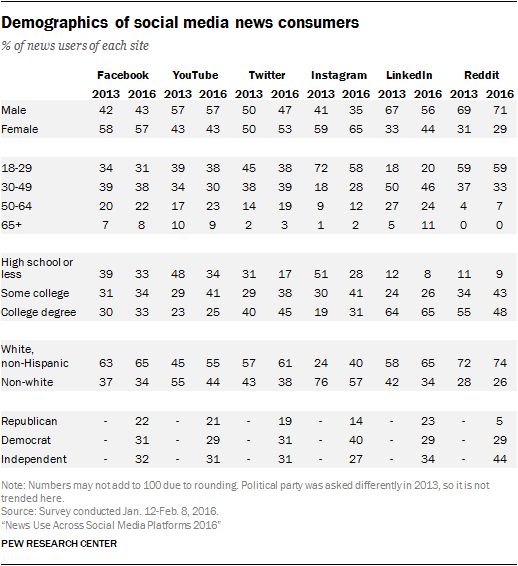
Digital readership data and what it can tell us
One of the less high-profile benefits of the news media’s move to online content is the fact that it has provided media researchers with an important tool: Readers now leave a digital footprint, meaning that researchers no longer need to rely only on a reader’s self-reports of what they saw, heard or read that day.
- A typical news website, for example, can tell you how many people read any specific article, at what times of day, how long they spent there and from where in the digital world they arrived.
- Amid this avalanche of news data, audience metric companies arrived on the scene to help individual organizations make sense of their own data and to provide a consistent way of measuring and interpreting behavior across numerous websites.
- One of these companies is Parse.ly, which agreed to share anonymized September 2015 data from 30 of their diverse news media clients.
These data include measures for unique visitors, sessions with an article and complete interactions with a given article.
- The unique visitor metric (also referred to simply as visitor) reflects the total number of individuals that visited a particular website, as identified by first-party cookies, on a particular device during the month studied.
- Another central metric in this analysis is engaged time. This captures how much time a user spends with content by tracking cursor movement, clicking and scrolling.
Sources Jeffrey Gottfried and Elisa Shearer
